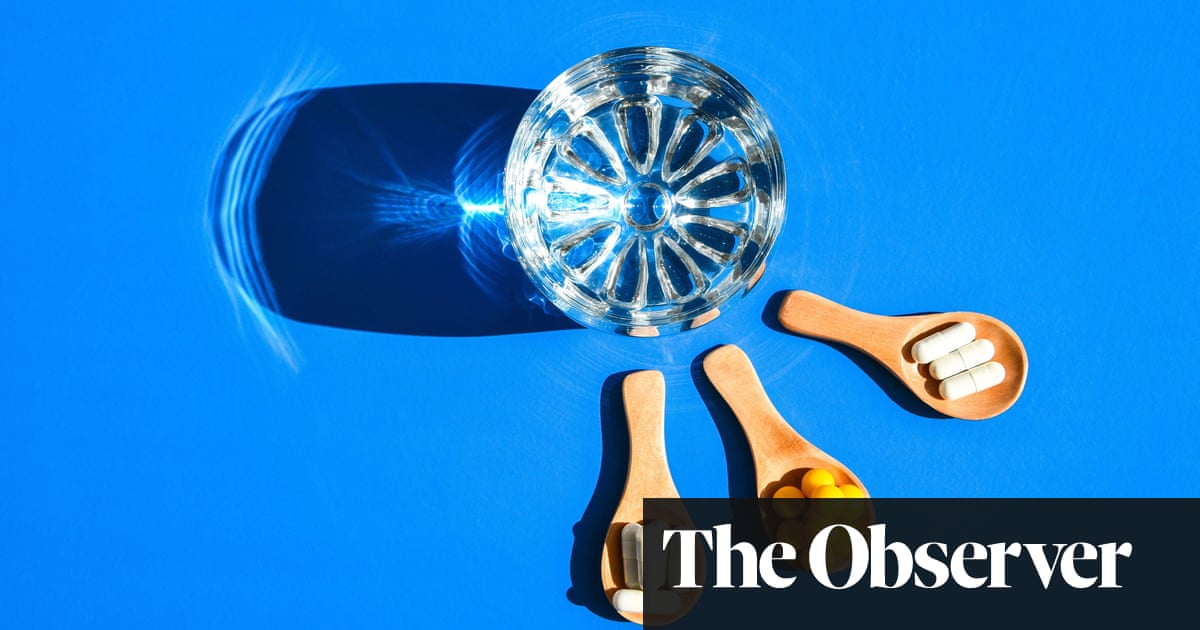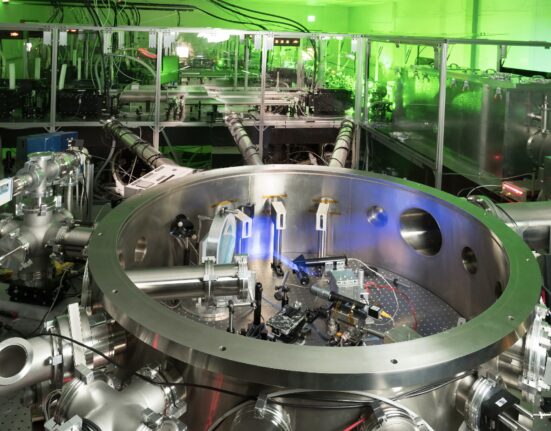In August, Keely Hodgkinson won Great Britain’s only Olympic gold medal on the track. The foundation of the 800m star’s world-beating performance came from a regime that comprises intensity over mileage, cross-training, sand-dune workouts and a £15 supplement that has been around for years but has enjoyed a breakthrough year in 2024. Hodgkinson uses sodium bicarbonate – AKA baking powder – to power up her training and races, specifically Maurten’s “bicarb system” that, according to one leading coach, was used by 80% of endurance athletes in Paris. “I couldn’t recommend it strongly enough,” said Hodgkinson’s coach, Trevor Painter. But why? What is it about sodium bicarbonate and the Maurten system that’s had it labelled “gold dust” by another leading coach? And beyond the bicarb, what other legal supplements are used? The industry is currently valued at $17.61bn (£13.15bn) – that’s an awful lot of pills, powders and potions that purport to improve sporting performance. Here we look at the evidence on four of them.
Beetroot shots
The root vegetable is packed with nitrates, which can boost athletic performance. However, to be effective, they need to be highly concentrated – a 75ml shot requires around six beets.
“When you ingest nitrate-containing food, some enters your enterosalivary system,” says Andy Jones, professor of applied physiology at Exeter University. “Salivary glands secrete nitrate-rich saliva, which the bacteria in your mouth break down into nitrite. You swallow this nitrite, which your gut converts into nitric oxide in the gut.” In turn, your blood vessels relax and dilate, and blood flow increases, making exercise “easier”, and you can work harder.
The evidence
Jones’s 2009 study saw cyclists enjoy a 16% increase in time-to-exhaustion during a time trial. Since then, there have been multiple studies backing up claims of gains from the shots. Originally, it was thought endurance athletes were the sole beneficiaries but recent research suggests they optimise performance in high-intensity sports such as sprinting and football, too. Moreover, “Recreational athletes benefit more than elites,” says Jones, because elite athletes’ cardiovascular systems are already operating close to maximum.
Dosing and side-effects
Ideally, shots should be taken two to three hours before exercise, as that’s when nitrite concentration peaks. Fifteen Beet It shots come in at £25 (about £1.66 each).
Aside from pink urine, there are no side-effects. Remember to avoid mouthwash because it kills the bacteria in your mouth that kickstart the nitric oxide process.
How was it for me?
I used beetroot shots when I completed l’Étape du Tour (where amateurs complete a stage of the Tour de France) a couple of years ago. I felt fresher and fitter, though this could have been down to making better food choices.
Probiotics and prebiotics
Probiotics are live microbial food supplements, while prebiotics are a source of fibre that fertilises the good bacteria in your gut. You can get probiotics from fermented foods such as sauerkraut and kombucha, while prebiotic foods include asparagus and garlic. Both also come in supplementary form. And both have the potential to improve your athletic prowess, especially if you’re a recreational runner or cyclist.
“Probiotics and prebiotics are associated with better general health, but there’s increasing research [suggesting] they can improve performance, too,” says Adam Collins, who is doing a PhD in prebiotics and exercise at Bath University.
The evidence
“A 2020 study showed that cyclists burned through more carbohydrate per hour when supplemented with probiotics due to changes in the intestinal lining,” says Collins. The more carbohydrates you can break down and use during exercise without suffering from cramps and gastro issues, the theory goes, the more energised you are, and the longer and stronger you can run, ride or swim.
“Research also shows that probiotics can reduce the duration and incidence of illness in athletes, but not the severity,” adds Collins. And there are further wins in reducing the effects of respiratory illness, which is common for those exercising outdoors in dry, wintry conditions.
Dosing and side-effects
Many commercial probiotic drinks or pills have 25-50bn bacteria per dose, of which you take one a day. “You’re looking at a daily hit of 2.5g to 10g prebiotics,” says Collins. You can buy a joint probiotic and prebiotic supplement for around £20 for 60 capsules (around 33p a day).
When it comes to side-effects, Collins says some people do experience gas and bloating. “In the most severe cases, you’d have to stop exercising and hit the toilet. Some also need to poo every time they urinate. But, generally, this passes quickly.”
How was it for me?
I’m currently a guinea pig in Collins’s prebiotic study – I may be getting a placebo so it’s too early to say what the benefits are. Collins hopes to publish his study next year.
Creatine
Creatine is stored in the muscle as phosphocreatine and plays a key role in generating energy for all-out, maximal efforts. “The problem is, its stores are limited,” says Dr Marc Fell, team nutritionist at cycling team Ineos Grenadiers. “So, by consuming more creatine, you’ll resynthesise phosphocreatine quicker during exercise, meaning you can work harder.”
Creatine is usually found in red meat and shellfish but in relatively small amounts, which is why supplementation is popular. It’s also why supplementation could benefit vegetarians more than carnivores.
The evidence
A 2003 review of more than 500 studies found that about 70% of these studies reported statistically significant positive results. A 2017 study saw the creatine group increase muscle mass by 7.2% over the placebo group, while research in 2000 found footballers maintained sprint and jumping performance on creatine. There’s also increasing evidence that creatine boosts brain health, cognition and memory, especially in older people.
Dosing and side-effects
Creatine comes in many forms but opt for the monohydrate version. It has been proved that it is absorbed quickly and it has evidence to back it up, unlike supplements such as creatine ethyl ester.
When it comes to dosage, “It depends how quickly you wish to increase your creatine stores,” says Fell. “One option is a loading dose of 20g of creatine per day (taken in four 5g doses) for five days, followed by a daily dose of 3-5g. Or simply consume 5g a day. You may benefit more if you take creatine immediately after exercise and with carbohydrates such as rice or pasta.” A 250g tub of creatine powder starts from around £10. At 5g per serving, that’s 20p a day.
“The most common side-effect is weight gain, which occurs because creatine causes water retention in the muscles. That can add up to 2kg.” Which isn’t great for weight-based sports such as cycling.
How was it for me?
It provided a moderate uplift in strength but, sadly for this 47-year-old, more noticeable was the water retention, which made me look bloated. Thankfully, claims that creatine causes hair loss proved unfounded.
Baking powder
Studies into the performance-enhancing effects of baking power stretch back to the 1930s but the common and unwelcome effects it has on the gastrointestinal system prevented widespread use by athletes.
Recently, however, sports nutrition companies have discovered ways of delivering the powder in a gel, which mostly overcomes these issues.
When you exercise hard, you feel “the burn”. That’s down to a buildup of hydrogen ions that makes your blood more acidic, resulting in a drop in muscular power and performance. That’s where the “saviour” sodium bicarbonate comes in. It’s an alkaline buffer. Consume this before exercise and, the theory goes, because you’ve started from a more alkaline base, you have the capacity to work harder and, in Hodgkinson’s case, run faster before the blood becomes acidic and slows you down.
The evidence
In 2021, the International Society of Sports Nutrition concluded that sodium-bicarbonate supplementation improves performance in “muscular endurance activities … including boxing, judo, karate, taekwondo and wrestling, and in high-intensity cycling, running, swimming and rowing”.
Dr Andy Sparks, honorary visiting research fellow at Liverpool John Moores University, has done research in this area that led to him being hired by sports nutrition company Maurten. Their hydrogel formulations have enjoyed widespread take-up. “The carbohydrate hydrogel protects it in the stomach and optimises bicarbonate delivery,” he says. “This new method of ingestion has extended its reach to endurance athletes and reduced potential side-effects.”
Dosing and side-effects
At present, there are no independent studies into Maurten’s bicarb system. “But I wouldn’t put my name to any paper that I wasn’t confident was well conducted, appropriately analysed and interpreted,” says Sparks. “There’s no way I’d have made the move away from full-time academia if I wasn’t convinced of the efficacy of the products. The athletes are happy, too.”
As for cost, baking soda is nominal and can work. Maurten’s product starts from around £60 for four servings, so £15 a go. So, not cheap. Also, try it first in training, not racing, as you don’t want any gastro surprises.
How was it for me?
I’ve briefly played around with sodium bicarbonate in both pill and Maurten form but have been unable to draw any conclusions. I tried Maurten’s mix before a parkrun. There was no bloating or wind – though the gusts sweeping off the Severn channel meant, once again, that no conclusions could be drawn.













